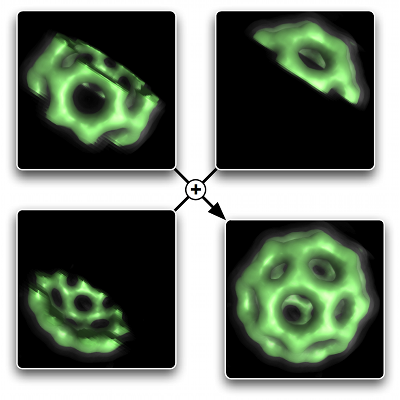DB or sort-last decomposes the rendered database so that all rendering units process a part of the scene in parallel. This process is called domain decomposition in the HPC world.
For applications rendering polygonal data, the depth buffer information is used to composite the individual images correctly. Volume rendering applications use an ordered alpha-based blending to composite the result image.
The task decomposition for sort-last rendering provides near-linear scalability. The recomposition has linear increasing IO requirements, and is often the factor limiting scalability. This increasing recomposition work can be addressed by using parallel compositing.
Equalizer-based applications have to interpret the database range given at run-time to support DB compounds. The database range is a one-dimensional vector in normalized coordinates giving the start and end of the part of the application's data to render.
DB compounds are often used to break down the data size to fit onto GPU memory, which provides super-linear scalability. For further scalability, it is advisable to combine it with other scalability modes, such as 2D compounds.
Applications visualizing irregular data should use a DB load equalizer, which will adapt the database range each frame based on the current load.
3D model courtesy of AVS, USA.



